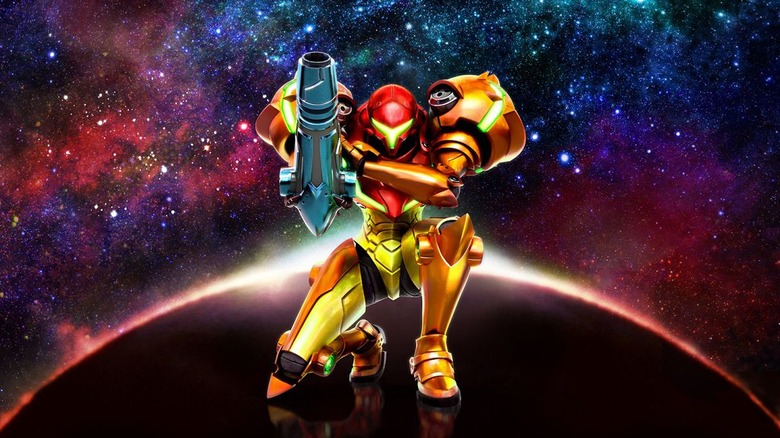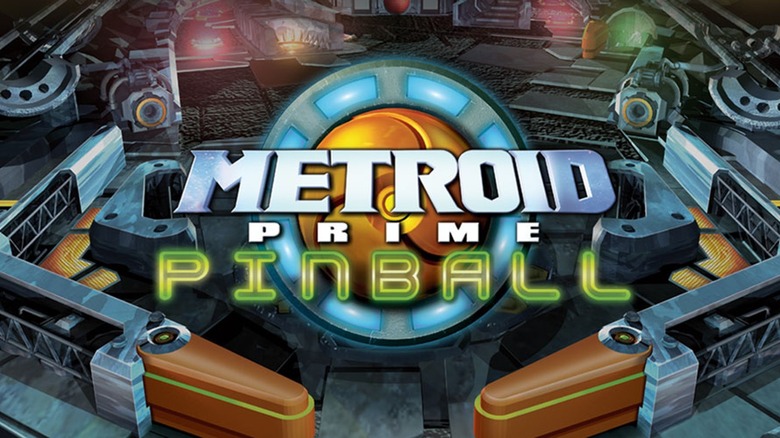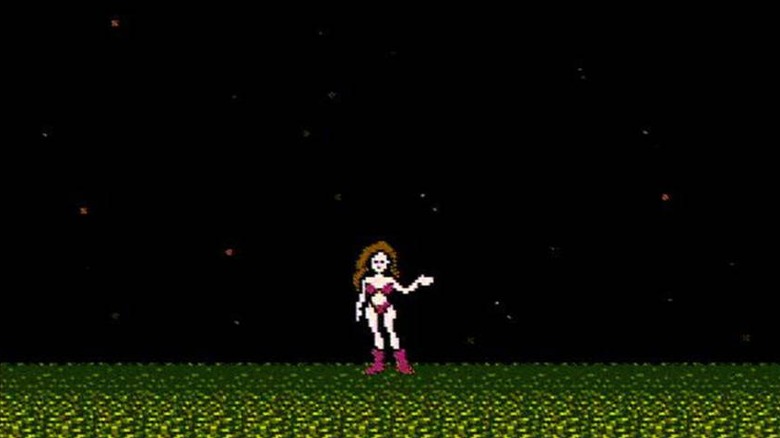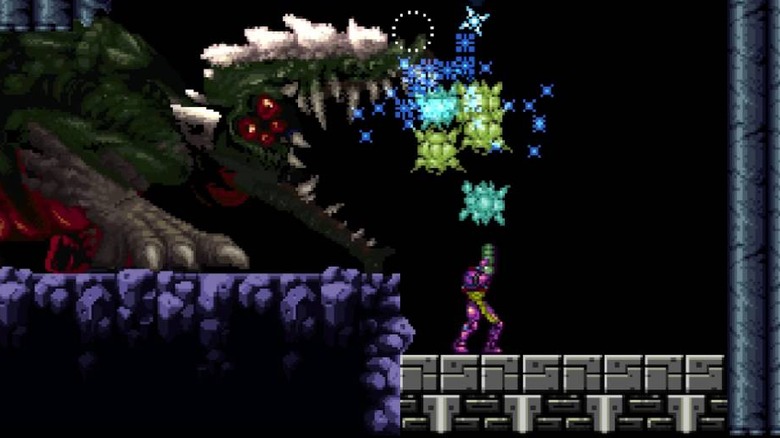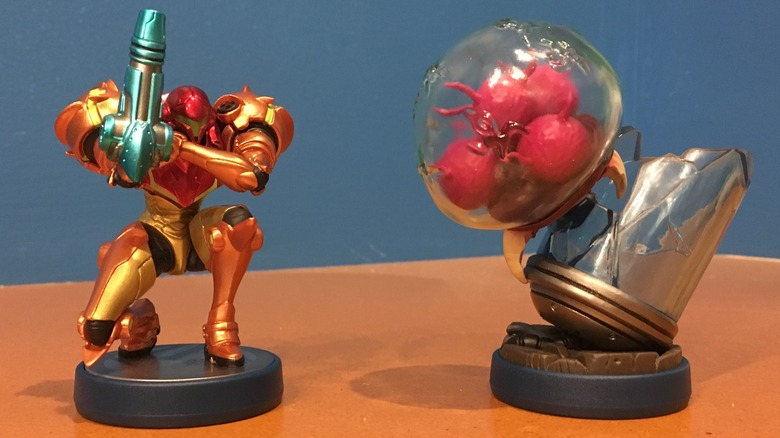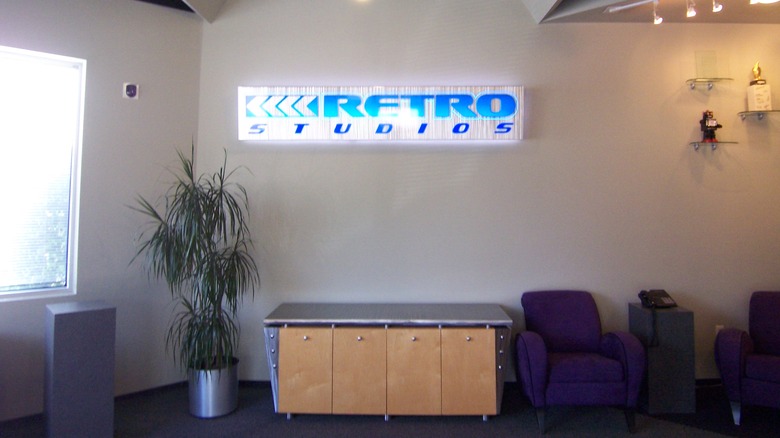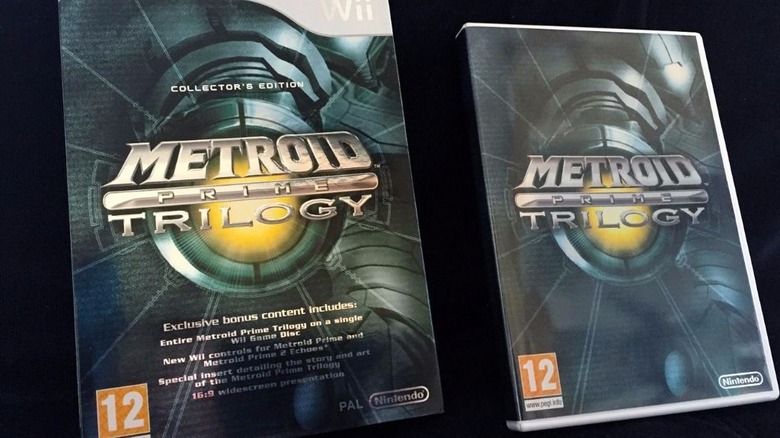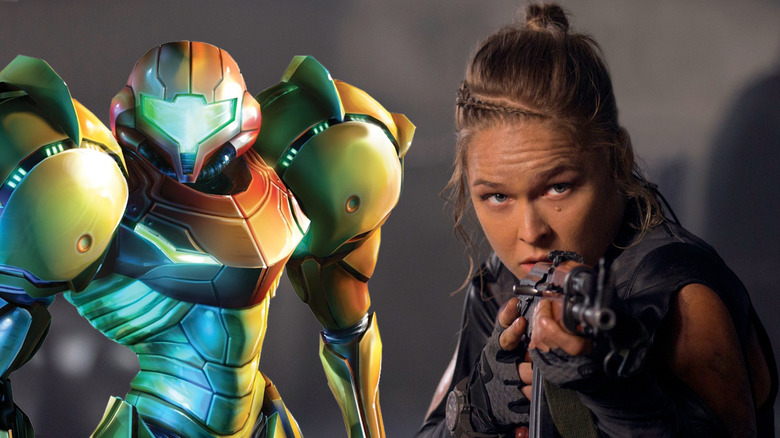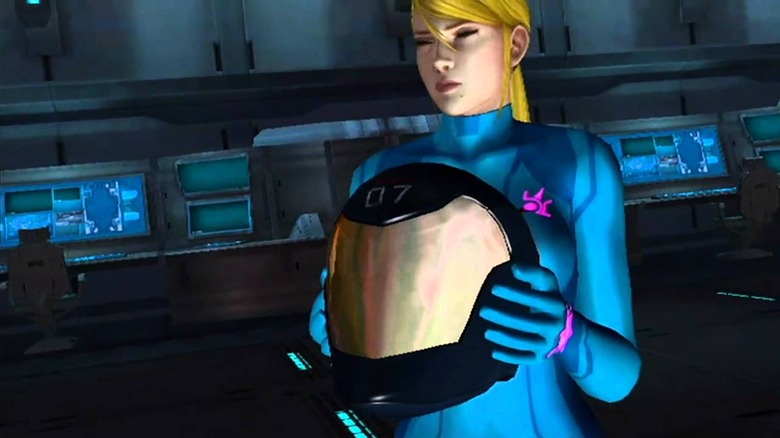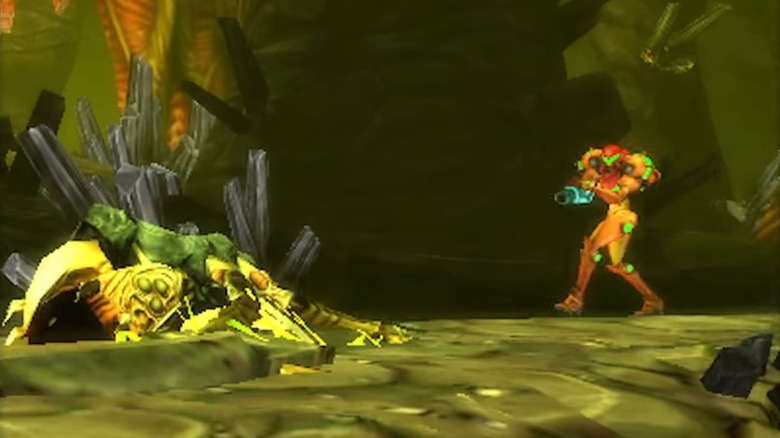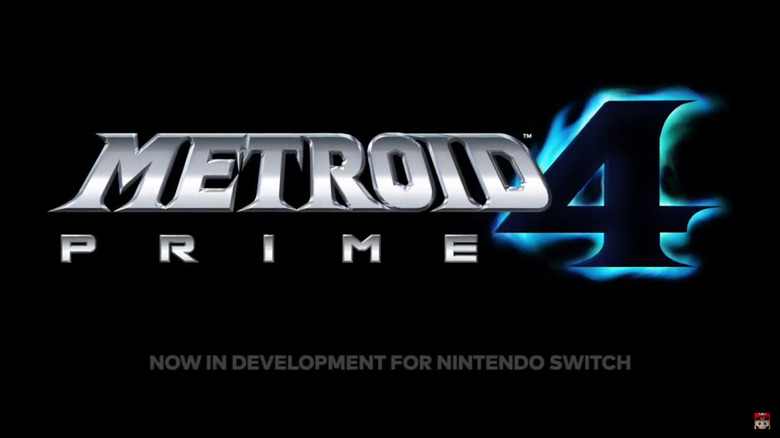The Untold Truth Of Metroid
We may receive a commission on purchases made from links.
If you have to name an iconic video game series, you usually can't go wrong by looking in Nintendo's direction. The company has a roster full of well-known intellectual properties, from titans like Mario and The Legend of Zelda to less-used-but-still-huge franchises like Star Fox and F-Zero.
But while Nintendo has created some of the best games ever across multiple genres, only one was so unique as to actually define its own. And that game was Metroid.
You may not see a whole lot of Metroid itself these days, but you've likely seen the game's name attached to the front of "Metroidvania." It's a term now used to describe a title that mixes platforming with progress — the idea that you can see an inaccessible area in a level, and come back to it later once you've upgraded. Lots of games incorporate Metroid-like elements these days, and they all have Nintendo's series to thank. So let's learn more about it.
Below, we've gathered some interesting tidbits about this storied Nintendo franchise. You'll learn obscure facts about the game itself. You'll also get filled in on some of the controversy surrounding its main protagonist, Samus. And you'll even get the skinny on a brand new series entry coming sometime in the future.
This is the untold truth of Metroid.
Several Metroid titles were developed by studios outside of Nintendo
Nintendo is notoriously protective of its properties. For proof, all you have to do is look at how controlling the company can be about what Mario can and can't do in certain games. Ubisoft had the honor of using Mario characters in its 2017 title, Mario + Rabbids: Kingdom Battle. But the team behind the game was forbidden from having Mario jump. Why? Because he only does that in his platforming games.
For that reason, Nintendo seems to prefer handling its IP on its own. But Metroid? That series is an outlier. And you might be shocked to discover that some games in series weren't developed by Nintendo at all, but instead, by outside game studios.
First, there's Metroid Prime Pinball, a 2005 title that capitalized on the recent popularity of Metroid Prime to show off the Metroid universe in pinball form. That game was developed by Fuse Games. Then, in 2010, Team Ninja — known best for the Ninja Gaiden series — took a crack at the franchise with Metroid: Other M. From there, a studio by the name of Next Level Games got to play with the Metroid license next, releasing Metroid Prime: Federation Force in 2016. And last but not least, a developer called MercurySteam re-imagined an older Metroid title (Metroid 2: Return of Samus) when it released Metroid: Samus Returns in 2017.
Nintendo has taken some heat for its portrayals of Samus over the years
There's always been some good and bad with the way Nintendo has handled Samus Aran, the lead of its Metroid games. On one hand, Nintendo's use of a female main character — especially one who was a gun-toting bounty hunter — was a breath of fresh air when the series started in the '80s. But the way Nintendo revealed Samus's identity? That could have been handled a lot better.
Case in point: one of the secret endings of the original Metroid stripped Samus down to nothing but a bikini outfit and boots.
And sadly, that wasn't the last time Samus would be robbed of her autonomy and placed into a more "typical" female role. In Metroid: Other M, Abbie Heppe of the now-defunct G4 stated that the game, "expects you to accept her as a submissive, child-like, and self-doubting little girl that cannot possibly wield the power she possesses unless directed to by a man."
It's disappointing, because Samus as a character could almost certainly be held up as an icon of equality: proof that a female main character can kick just as much tail as a male main character. But Nintendo has a spotty track record with just letting it happen.
A fan-made Metroid game was nominated for an award... but mysteriously vanished
No game company may be more ferocious in protecting its intellectual property than Nintendo. The company has dismantled emulation sites. It's feuded with YouTube content creators who use footage from Nintendo games. And the company has been swift in killing fan-made games that use Nintendo characters.
It's that last one that comes into play here. Because some of those fan games are pretty good, despite not having Nintendo's blessing. And one was actually up for a Game Award in 2016 ... until it wasn't.
The game was called AM2R, which stood for "Another Metroid 2 Remake." Fans seemed to really enjoy the independently made take on Metroid 2: The Return of Samus, and when ballots started being assembled for the Game Awards' "Best Fan Creation" category, AM2R was listed along with several other unauthorized Nintendo fan projects.
But all of those games were soon removed from the Game Awards list entirely. No one knew why at the time, and to this day, no one has ever taken responsibility for the removal. But some speculate that Nintendo pulled some strings behind the scenes.
Based on the company's hostile approach toward dealing with fan games, it wouldn't be all that shocking.
Nintendo tied a hard mode to an Amiibo
Nintendo's Amiibo business has been incredibly good to the company. The little statuettes are collectible, fun to display on a shelf, and also have NFC built in, which enables gamers to unlock weapons, skins, and other features inside games.
But some took offense to the way Nintendo approached Amiibo use with its game Metroid: Samus Returns on the 3DS. Because an entire extra hard mode was included on the cartridge, and could have feasibly been accessed by anyone who purchased it. But the mode was locked behind the use of the Metroid Amiibos.
You can likely understand why this was an issue. The Amiibo figurines are an extra cost on top of the game price, and for one extra mode, that's a bit steep. Not only that, but Nintendo's Amiibo products are traditionally very hard to track down. The company doesn't produce a whole lot of them, which means even those who could have paid for one might not have been able to find it. All the while not being able to access a mode that should have been available right from the start.
Nintendo held firm. The company never patched the game to unlock the mode for all players. And, at press time, a Metroid Amiibo like the two above now sells for more than even Metroid: Samus Returns.
Retro Studios nearly went under before the release of Metroid Prime
The Metroid Prime Trilogy, like The Legend of Zelda: Ocarina of Time and Super Mario 64, is often viewed as an achievement in gaming. It took a once-2D game series and moved it successfully into 3D, transforming it forever going forward. And it put the developer behind the trilogy, Retro Studios, on the map.
But wow, was Retro in a bad place before they knocked it out of the park with Metroid Prime. In fact, it's a wonder Retro survived at all.
The company was hemorrhaging money left and right. It had lots of employees but zero games to show for it. And awful stories continued to come out of Retro. At one point, it was rumored that employees were operating porn sites at the studio, hosting them on Retro's servers.
Something had to change — and Nintendo made it happen. The company — which had recently chosen Retro to develop Metroid Prime – bought the majority of the studio's stock. After that, Retro trimmed down its employee count. And new leadership was installed to keep the studio, and Metroid Prime, on track.
It's tough to argue with the results. Metroid Prime released to glowing reviews. And Retro is in a far better spot today than it was at the turn of the century.
Nintendo discontinued the Metroid Prime Trilogy
The 3D Metroid renascence started not on Nintendo's most popular home console, the Wii, but on one of its worst-selling, the GameCube. It wasn't until Metroid Prime 3: Corruption that Samus finally showed up on the Wii, where the Metroid series was exposed to far more gamers. Knowing that, it makes sense that Nintendo would try to get the whole trilogy on the Wii after Metroid Prime 3 released. And it did so with the release of Metroid Prime Trilogy Collector's Edition in 2009.
Unfortunately, Nintendo didn't make many copies of the three-game bundle. In fact, the company didn't even sell the Collector's Edition for a lengthy period of time. It discontinued production on the package after just four months, leaving many interested buyers in the lurch.
Why would Nintendo stop making and selling Trilogy so quickly? No one knows. The company stated at the onset that there would be "limited availability," but why Nintendo would choose to sell less of its critically acclaimed Metroid titles never quite made sense. And what made the decision even worse was the fact that — outside of GameCube backwards compatibility — there wasn't any other way to purchase the revamped versions of Prime and Prime 2 on the Wii.
The company later sold Trilogy at a discounted price on the Wii U — another Nintendo system with a very small install base.
A few Hollywood names are interested in doing a Metroid movie
Despite the talk around a potential Mario movie in the works, we haven't seen a film featuring a Nintendo character in quite some time. But fans of Metroid can cling to a little bit of hope if they've wanted to see their favorite bounty hunter on screen. Because there are at least two people interested in doing a movie in the Metroid universe. One person who wants to write the script. And another who would like to play Samus Aran herself.
Jordan Vogt-Roberts may not be a household name to many, but he's the director behind Kong: Skull Island, as well as the scriptwriter for the future Metal Gear Solid film. And he's talked openly about an idea he's had for a Metroid film that focuses primarily on Samus, placing her alone as the sole speaking character. "As soon as they introduce other talking characters in those games, to me it loses everything," Vogt-Roberts said in an interview.
And that's not all. Former UFC fighter and budding actress Ronda Rousey has also spoken about her desire to be in a Metroid movie. "I've always wanted to be Samus," Rousey answered when asked which video game star she'd love to play. "That would be badass. I love how people found out later that it was a hot chick on the inside."
There's an ongoing debate about whether or not Samus is a transgender woman
A lot of the online debate around the Metroid franchise has to do with its main character, Samus Aran, and her gender. And typically, the conversation revolves around whether or not the character has been overly sexualized. But there's another bit of back and forth about Samus that actually challenges everything we think we know about the character.
Some believe that Samus Aran is a transgender woman.
Writing for The Mary Sue, Brianna Wu and Ellem McGrody put forth the argument that Samus in 1994 was described in a Japanese guide as a "newhalf," which they believe was meant to indicate she was transgender. Anthony Lee of TechRaptor, however, has a different take. He argues that the proof cited in the article by Wu and McGrody is taken out of context, and could have referred to the change in the character's gender during Metroid's development.
Which is the right answer? We'll leave that for you to decide. Either way, Samus has sparked a lot of discussion about gender in games.
There could be more 2D Metroid games in the future
It's no secret that the world of video games is caught up in a 2D revival. Games like Shovel Knight and Axiom Verge are proving that there's very much a market for 2D platformers and Metroidvanias. And honestly, what game could be a better Metroidvania than Metroid itself? It's likely why Nintendo released Metroid: Samus Returns for the 3DS back in 2017. The game put Metroid back on the radar for gamers, and it allowed Nintendo to capitalize on the 2D craze.
And that might not be all. There could be more 2D Metroid titles on the way.
Speaking with Game Informer, the co-creator of Metroid – Yoshio Sakamoto — talked about how he'd like to return to the franchise in two dimensions once more, but that ultimately the decision wouldn't be up to him. "Like when I finished the first game," he said, "if there is another opportunity to make another Metroid, that is something I would love to do. Of course, that really depends on how much people really want to buy a 2D Metroid."
Judging by the reception to Samus Returns, which Polygon called "an essential addition to the Metroid catalog," we're guessing the series hasn't seen its last 2D game.
Metroid Prime 4 is currently in development ... but we've never seen the game in action
Yoshio Sakamoto may want to create another 2D Metroid title in the future, but fans who are craving another adventure with Samus don't have to worry about getting another game altogether. Nintendo made it absolutely clear that Metroid will return in 3D, announcing at E3 2017 that Metroid Prime 4 was currently in development for the Nintendo Switch.
That's the good news. The bad news? We haven't seen a single second of game footage. And we have no idea when the game is coming out.
Ahead of E3 2018 earlier this year, some speculated that Nintendo would finally pull the curtain back on its latest installment in the Prime saga. But the show came and went, and Prime 4 was nowhere to be found. Bill Trinen of Nintendo later commented on the game's absence, stating, "We show things when we think we're ready to show them. And when we think we're ready to show Metroid Prime, we'll show Metroid Prime."
Here's hoping it's worth the wait.

